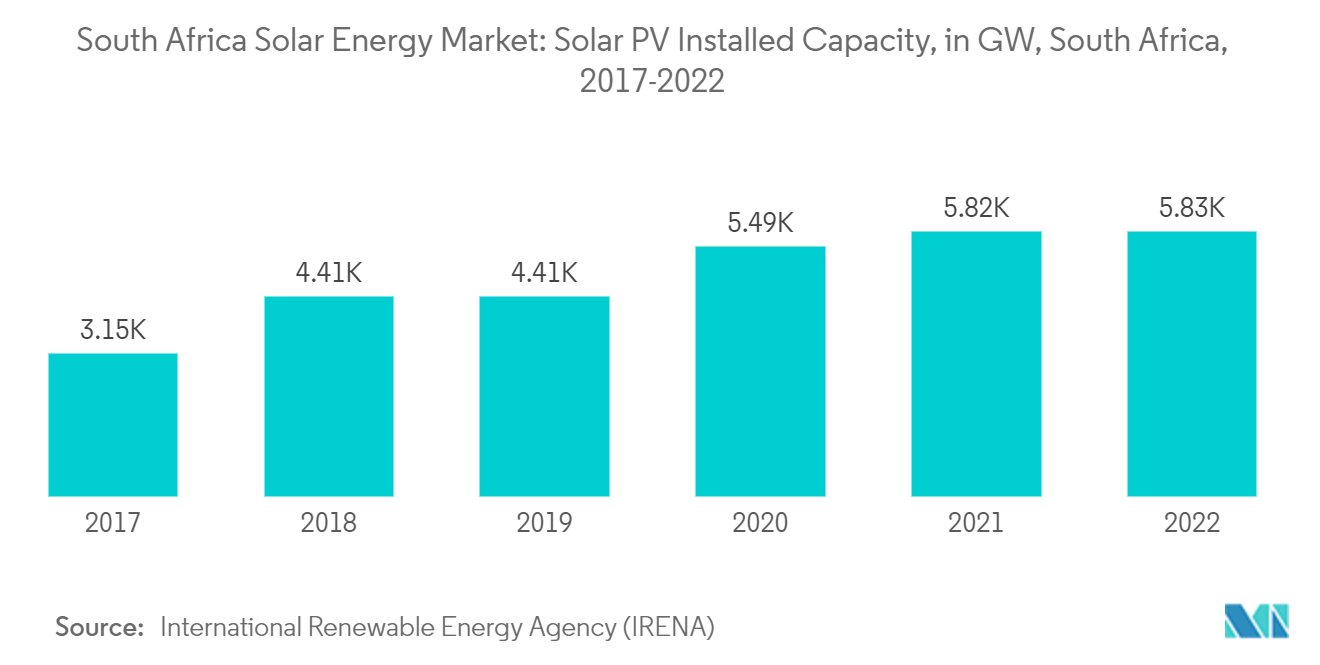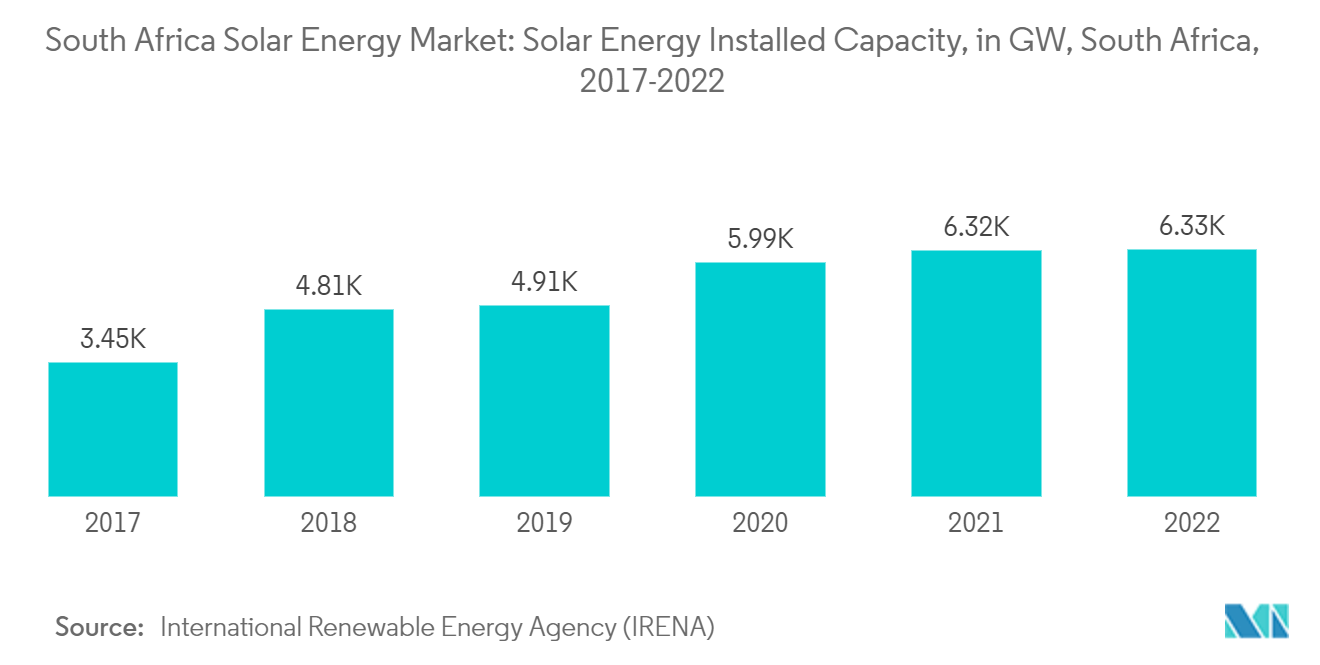Market Trends of South Africa Solar Energy Industry
Solar PV Segment to Dominate the Market
- South Africa has great potential for renewable energy resources, especially solar and wind, the most prominent technologies in the current renewables' procurement windows. South Africa has an average of more than 2,500 hours of sunshine per year, and the average solar radiation levels range between 4.5 and 6.5 kWh/m2 per day. The country’s Northern Cape is one of the most attractive solar resource areas in the world.
- According to the Climate Commission of South Africa, transitioning South Africa from fossil fuel to renewable power system will require the deployment of roughly 150 GW of wind and solar capacity by 2050, a rate of 4 GW each year to net zero.
- Furthermore, according to the Blended Finance Taskforce and Stellenbosch University's Centre for Sustainability Transitions report, South Africa will need USD 250 billion over the next three decades to transform its renewable energy system, which is around 3% of South Africa's GDP annually.
- In August 2023, Novare announced a substantial investment in rooftop photovoltaic (PV) panels to reduce carbon emissions across its African industrial and commercial segment and strengthen its commitment to sustainability.
- South African energy expert Anton Eberhard crunched data released by Eskom to find that South Africa's installed rooftop solar PV capacity increased from 983 MW in March 2022 to 4,412 MW in June 2023.
- The Department of Mineral Resources and Energy (DMRE) has begun the prequalification process for developing new renewable energy capacity, which includes 1 GW of solar PV and 1.6 GW of wind. The procurement is also part of South Africa's plan to tender almost 12 GW of solar capacity following the new Integrated Resource Plan (IRP). The IRP proposes to develop 6 GW of large-scale solar and 6 GW of distributed solar PV capacity by 2030.
- Therefore, owing to the above points, the solar PV segment is expected to dominate the solar energy market in South Africa during the forecast period.

Efforts To Reduce Over Reliance On Coal-based Power Plants are Expected to Drive the Market
- South Africa is the seventh-largest coal producer in the world, and the country is heavily dependent on coal-based thermal power plants. As of 2022, coal-based thermal power plants accounted for 84% of the entire electricity generation.
- In May 2023, South Africa's climate policy body announced that it is planning to delay retiring its aging coal-fired power plants to address electricity shortages. It said a power crisis had put the country on track to meet its climate goals anyway. The African National Congress has recommended that state power utility Eskom delay decommissioning its aging coal-fired power stations to help minimize rolling electricity outages.
- However, South Africa has abundant solar resources, making it a prime location for developing solar energy projects. The country has set a target of generating 18 GW of renewable energy by 2030, with solar energy expected to make up a significant portion of this target. The government’s Renewable Energy Independent Power Producer Procurement (REIPPP) program has successfully attracted investment and supported the development of solar energy projects in the country.
- The energy crisis has been primarily caused by overreliance on older coal-based thermal power plants owned and operated by the national power utility ESKOM. Additionally, for ESKOM’s coal-fired fleet, the Planned Capability Loss Factor (PCLF) for planned maintenance stood at 10.4%, and the Unplanned Capability Loss Factor (UCLF) due to unplanned outages stood at 24.6%. Other Capability Loss Factor (OCLF) stood at 2.9%.
- Such significant plant loss factor coefficients are primarily due to ESKOM’s coal-fired fleet age. Excluding the newly built Medupi and Kusile facilities, the average age of ESKOM’s coal-powered fleet is 41 years, which is significantly higher.
- According to the International Renewable Energy Agency (IRENA), in 2022, solar energy installed capacity was around 6,326 MW, with a growth rate of 0.15% from the previous year.
- Therefore, owing to the above points, efforts to reduce over-reliance on coal-based power plants are expected to drive the country's solar energy market during the forecast period.

